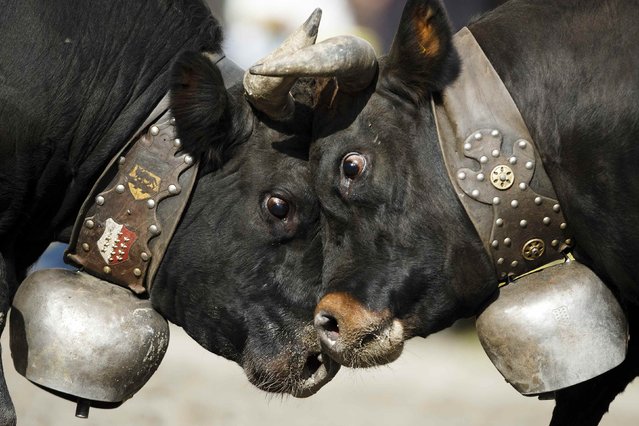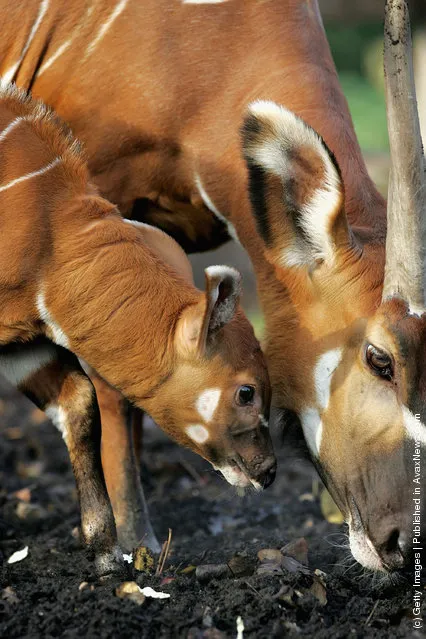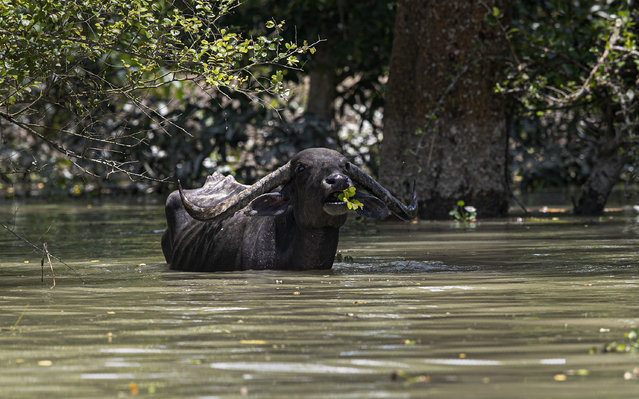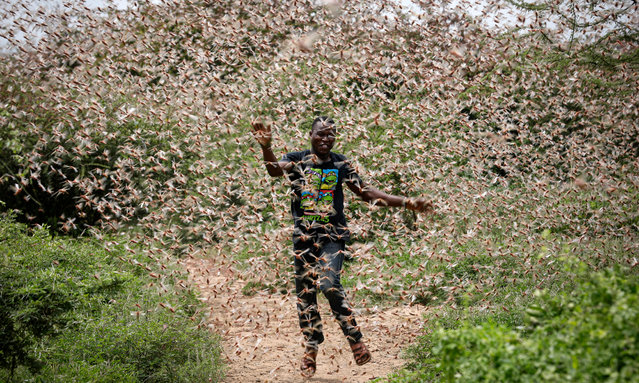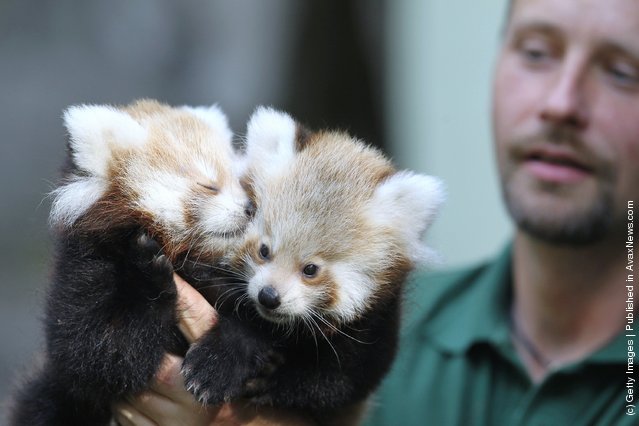
Zookeeper Michael Horn holds up Kit and Kitty, the twin red pandas born in June on the first day of their introduction into their new enclosure at Tierpark Zoo on September 13, 2011 in Berlin, Germany. The red panda (Ailerus fulgens) is a rare mammal native to the eastern Himalayas and southwestern China. (Photo by Sean Gallup/Getty Images)
14 Sep 2011 12:24:00,post received
0 comments

